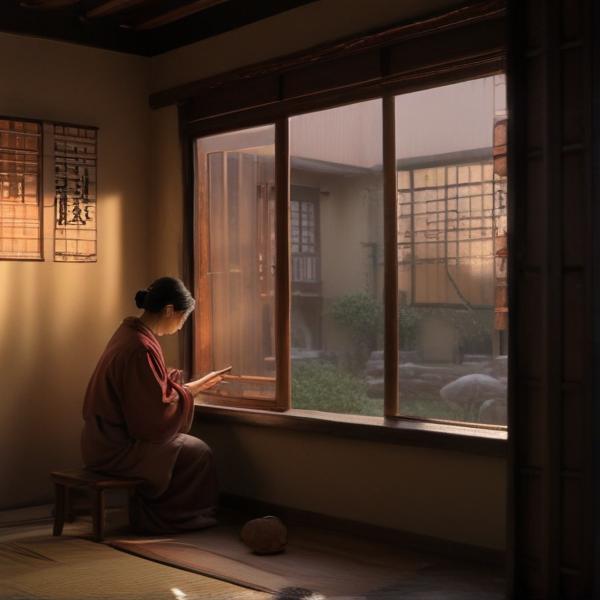基本信息 (Basic Information)
含义与用法 (Meanings & Usage)
中文核心释义 (Core Chinese Meaning): 安宁,平静,安定。
英文核心释义 (Core English Meaning): peaceful, tranquil, calm; to be at ease.
象形意义 / 为何这么写 (Pictographic Meaning / Writing Rationale)
文言文释义 (Classical Chinese Meaning)
文言文中多用于指安宁、安定,或表示宁愿、宁可,与现代意义相近。Mainly indicated peace, security, or 'would rather', similar to modern meanings.
深入学习 (In-depth Study)
字源故事 (Origin Story)
字形演变 (Character Evolution)
常用词语和例句 (Common Words & Examples)
安宁 (peaceful and calm; tranquility)
家是每个人心中最安宁的地方。
Eng: Home is the most peaceful place in everyone's heart.
宁愿 (would rather; prefer to)
我宁愿努力一次,也不想后悔一生。
Eng: I would rather try hard once than regret for a lifetime.
宁静 (tranquil; quiet; serene)
湖水在夜晚变得异常宁静。
Eng: The lake becomes exceptionally tranquil at night.
相关成语 (Related Idioms)
岁月静好,现世安宁
Meaning: May the years be quiet and the present world peaceful.
多语言翻译 (核心释义) (Translations (Core Meaning))
- French: paisible, tranquille, calme
- German: friedlich, ruhig, still
- Spanish: pacífico, tranquilo, calmado
- Italian: pacifico, tranquillo, calmo
- Portuguese: pacífico, tranquilo, calmo
- Russian: мирный, спокойный
- Arabic: هادئ، مسالم، مطمئن
- Persian: آرام، آسوده، صلحآمیز
- Dutch: vreedzaam, rustig, kalm
- Polish: spokojny, cichy, pokojowy
- Vietnamese: bình yên, yên tĩnh, thanh bình
- Ukrainian: мирний, спокійний
视频学习资源 (Video Learning Resources)
通过以下链接在热门视频网站搜索 "宁" 的更多讲解:
Search for more explanations of "宁" on popular video sites:
- 在 Bilibili.com 搜索 "宁 字源 说文解字" (Search on Bilibili)
- 在 YouTube.com 搜索 "Ning character origin etymology" (Search on YouTube)
网络参考 (Web References for "宁") ()
网络内容摘要 (Web Content Summary):
宁(拼音:níng, nìng, zhù)是汉语中的常用字,它的本义和起源非常有趣。Níng (pinyin: níng, nìng, zhù) is a commonly used Chinese character with an interesting origin and meaning.
-
象形起源: “宁”字最早见于甲骨文和金文,其字形像有上下及两旁立柱、中空可贮物的器具,表示“贮藏、储存”的意思。小篆后,上半部分为“宀”(屋顶),下半部分变为“丁”。 Pictographic origin: The earliest forms of “宁” appeared in oracle bone script and bronze inscriptions. The character originally depicted a container with pillars and an empty center for storage. In Seal Script, the top became “宀” (roof), and the bottom part became “丁”.
-
核心含义:本义是“贮藏”,由此又引申为“安定、平静、安宁”。现今常用以表达“安宁、宁静”的含义。 Core meanings: The original meaning is “to store or accumulate.” Later, it extended to mean “peaceful, quiet, tranquil.” Today, it often denotes “peace, tranquility.”
-
易混淆与用法:“宁”是“寧”的简化字。历史上两字本为不同汉字,现代则多作简繁对应。注意其多音(níng, nìng, zhù)和词语搭配。例如“安宁”(peaceful)、“宁愿”(would rather,读nìng)、“宁静”(tranquil)。有时“宁”也用于成语,如“宁死不屈”(would rather die than submit)。 Usage and confusion: "宁" is the simplified form of "寧," which were originally different characters. Modern usage often treats them as variants. It has multiple pronunciations: níng (peaceful), nìng (“would rather”, as in 宁愿), zhù (an ancient meaning). Common words include “安宁” (peaceful), “宁愿” (would rather), and idioms like “宁死不屈” (would rather die than yield).
总结:“宁”字从本义“贮藏”发展到“安宁”,有丰富的文化内涵和有趣的字形演变,是学习汉字演变和使用的重要实例。 Summary: The character “宁” evolved from meaning “to store” to signify “peace.” Its development reflects interesting cultural and graphic changes, making it a key example in learning Chinese character evolution and usage.
汉字"宁"的起源、演变过程-汉字字源辞典
《甲文编》539页 《类编》381页 《说文》307页. 象形字。像上下及两旁有立柱,中空可贮物。"宁"字在甲骨文中写作" ",金文沿袭了这一写法,另有异体作横置状。 小篆将中间部分改为曲笔作" ",致使隶定后上半部分变形为"宀",而下半部分变形为"丁"。 "。"寧"的简化字"宁"与之
宁(汉语文字)_百度百科
宁(拼音:níng,nìng,zhù)是汉语一级通用规范汉字(常用字)。"宁"和它的繁体"寧"原是两个不同的字,简体"宁"始见于商代甲骨文及商代金文,其古字形一说像上下及两旁有立柱,中空可贮物的容器,本义为贮积,读zhù。由贮藏引申出盛放、久远等义,再由久远引申出久立,这个意思 ...
更多图片 (宁 More Images) ()
